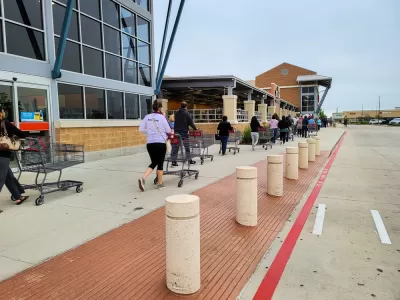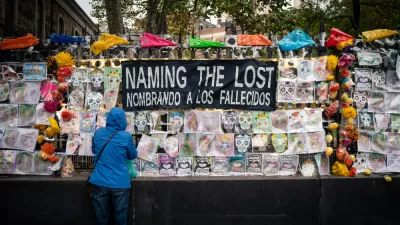Changes are coming, but they don't have to be anti-urban, and they could mean a more resilient world for cities and communities of all shapes and sizes.

Bill Fulton writes a two-part series on the future of cities after the pandemic, premising the entire exercise on two points: that cities have always existed, and that cities have also evolved. Despite the anti-urban messages gaining a larger audience as the coronavirus pandemic takes an especially heavy toll on New York City, Fulton suggests that cities are cleaner and safer than they were a century ago, and that they have thrived for a long time because they are adaptable.
Fulton takes those lessons to mean that cities will surely change as a result of the coronavirus: "The world after COVID-19 will be different — as it is after any disaster. And COVID-19 will accelerate changes that have been brewing in cities for a long time. The result will be a new kind of city, different than what we have seen before. A city that should be able to withstand shocks like COVID-19 in a sturdier fashion."
With more details on each of these points, Part 1 includes a list of predicted changes in cities and the world after the pandemic is over:
- A renewed focus on public health
- More sophisticated urban design
- Fewer retail stores and a different kind of street life
While Part 1 of the series digs into the public life and design of cities, Part 2 focuses more on the private side of life in cities:
- A changing office work environment
- More flexible public transit
- A renewed appreciation for just plain old walking
Fulton states a summarization of these predictions thusly: "Fewer stores but more bars and restaurants — and maybe a more bustling street life. More remote work and therefore more activity in neighborhoods. A more carefully constructed, safer public realm. More flexibility in getting around. All of which will make cities — and their suburbs — better places to live."
FULL STORY: Here’s what our cities will look like after the coronavirus pandemic

Alabama: Trump Terminates Settlements for Black Communities Harmed By Raw Sewage
Trump deemed the landmark civil rights agreement “illegal DEI and environmental justice policy.”

Study: Maui’s Plan to Convert Vacation Rentals to Long-Term Housing Could Cause Nearly $1 Billion Economic Loss
The plan would reduce visitor accommodation by 25% resulting in 1,900 jobs lost.

Why Should We Subsidize Public Transportation?
Many public transit agencies face financial stress due to rising costs, declining fare revenue, and declining subsidies. Transit advocates must provide a strong business case for increasing public transit funding.

Wind Energy on the Rise Despite Federal Policy Reversal
The Trump administration is revoking federal support for renewable energy, but demand for new projects continues unabated.

Passengers Flock to Caltrain After Electrification
The new electric trains are running faster and more reliably, leading to strong ridership growth on the Bay Area rail system.

Texas Churches Rally Behind ‘Yes in God’s Back Yard’ Legislation
Religious leaders want the state to reduce zoning regulations to streamline leasing church-owned land to housing developers.
Urban Design for Planners 1: Software Tools
This six-course series explores essential urban design concepts using open source software and equips planners with the tools they need to participate fully in the urban design process.
Planning for Universal Design
Learn the tools for implementing Universal Design in planning regulations.
Caltrans
Smith Gee Studio
Institute for Housing and Urban Development Studies (IHS)
City of Grandview
Harvard GSD Executive Education
Toledo-Lucas County Plan Commissions
Salt Lake City
NYU Wagner Graduate School of Public Service





























